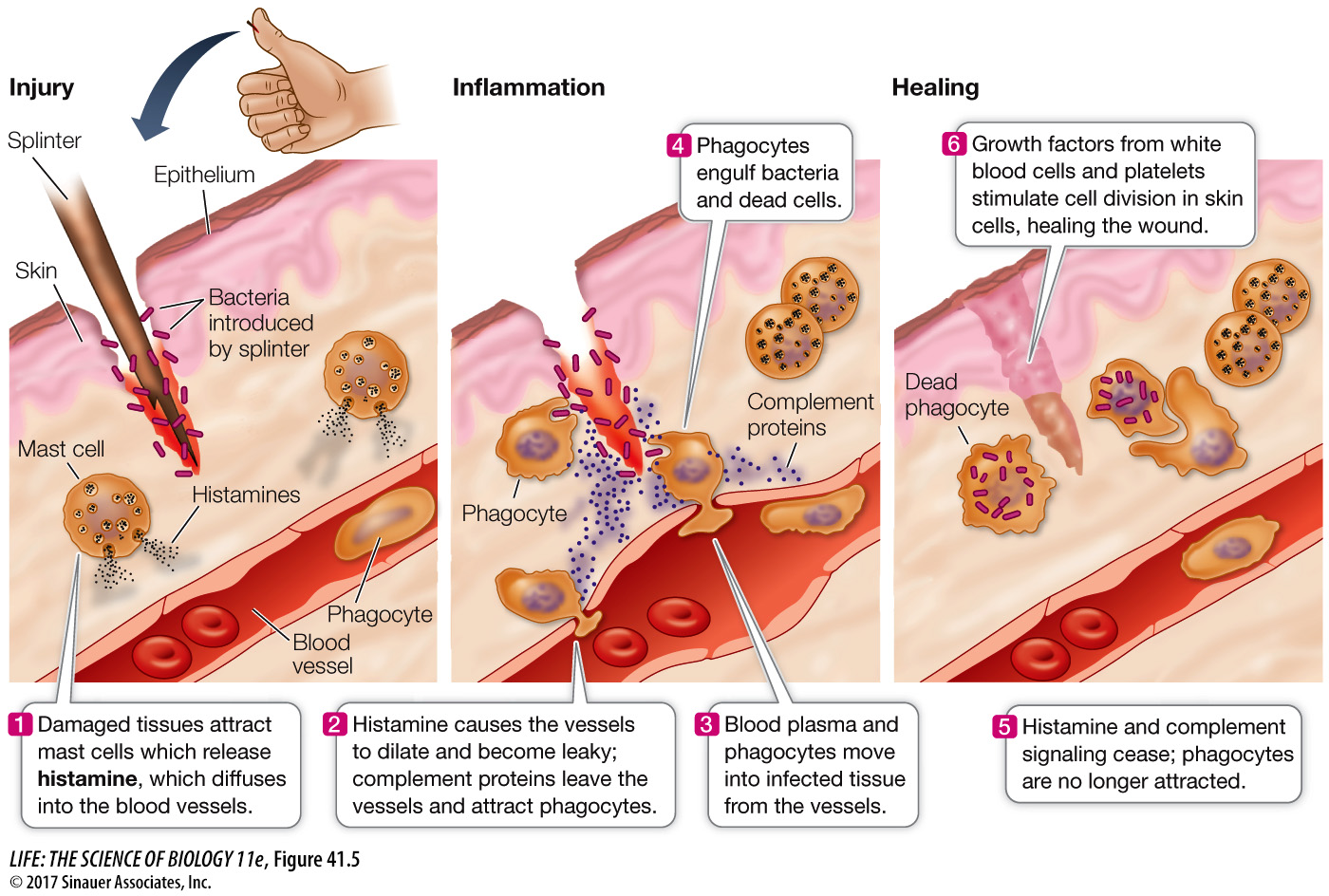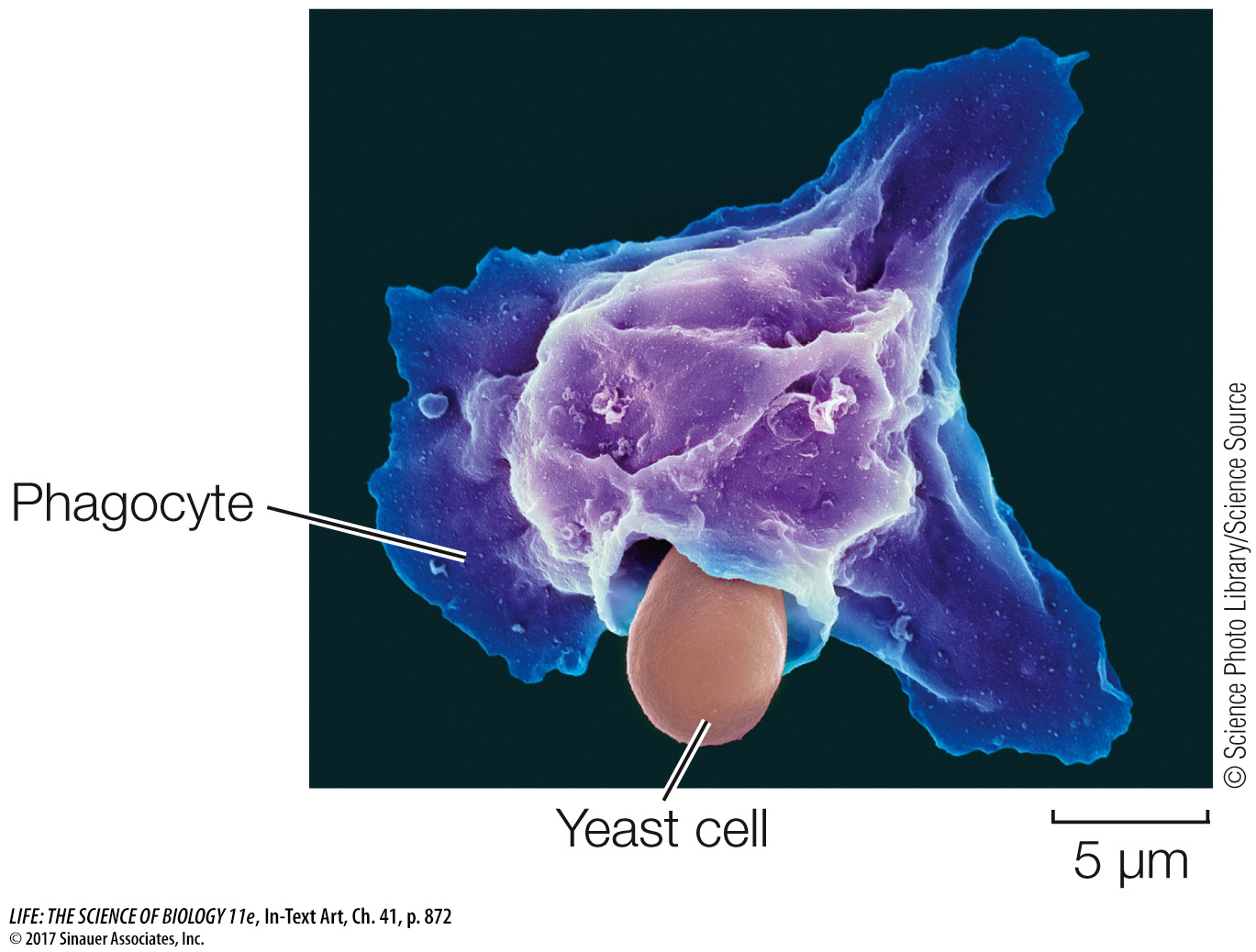Specialized proteins and cells participate in innate immunity
Several proteins are produced by the body either before an infection occurs or in response to invasion by pathogens. Two important groups are the complement and interferon proteins.
COMPLEMENT PROTEINS Vertebrate blood contains more than 20 different proteins that make up the antimicrobial complement system. This system can be activated by various mechanisms, including both innate and adaptive defense responses. The proteins act in a characteristic sequence, or cascade, with each protein activating the next:
First, the proteins attach to specific components on the surface of a microbe or to an antibody that has already bound to the microbe’s surface. In either case, binding helps phagocytes recognize and destroy the microbe.
Then, complement proteins activate the inflammatory response (see Figure 41.5) and attract phagocytes to the site of infection.
Finally, complement proteins lyse invading cells (such as bacteria).

Q: Antihistamines are a class of drugs widely used to treat people with inflammation. How do you think they work?
Antihistamines block mast cells from making histamine. Blood vessels at a site of injury do not dilate or become leaky, so phagocytes are not attracted to the site and fluid does not enter the damaged tissue. In other words, inflammation does not occur in response to bacterial infection.
Activity 41.3 Inflammatory Response
INTERFERONS When a cell is infected by a pathogen, it produces small amounts of signaling proteins called interferons that increase the resistance of neighboring cells to infection. Interferons are a class of cytokines and have been found in many vertebrates. Various molecules, including double-
PHAGOCYTES Some phagocytes travel freely in the circulatory and lymphatic systems; others can move out of blood vessels and adhere to certain tissues. Pathogenic cells, viruses, or fragments of these invaders are recognized by phagocytes, which then ingest them by phagocytosis.

Defensins, nitric oxide, and reactive oxygen intermediates inside these phagocytes then kill the pathogens.
NATURAL KILLER CELLS One class of lymphocytes, known as natural killer cells, can distinguish virus-
DENDRITIC CELLS These phagocytes occur in tissues exposed to the environment, such as skin and the linings of the digestive and respiratory tracts, as well as in blood. They act as messengers between the innate and adaptive immune systems. They can endocytose microbes, viruses, and even remmants of the virus-